Try to imagine the terror of it: It’s dark, near midnight, and you sit beside the bed of an 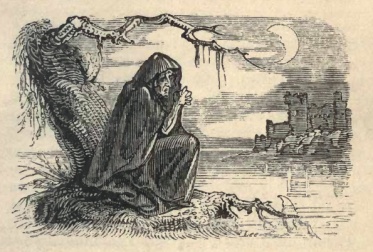 ailing family member. Through the window comes the sound of a woman in the grips of deepest grief. She is unrestrained in her keening, raw with sorrow. It is not merely the mysterious sounds that fill you with fear, but also the knowledge that in the day that follows, a member of your household will pass from the world. The source of this wailing is a banshee. She is a fairy, though she is far from what a modern American imagination might summon up at the word: this is no mischievous winged sprite, but rather an omen given a woman’s form.
ailing family member. Through the window comes the sound of a woman in the grips of deepest grief. She is unrestrained in her keening, raw with sorrow. It is not merely the mysterious sounds that fill you with fear, but also the knowledge that in the day that follows, a member of your household will pass from the world. The source of this wailing is a banshee. She is a fairy, though she is far from what a modern American imagination might summon up at the word: this is no mischievous winged sprite, but rather an omen given a woman’s form.
The banshee evokes an even earlier tradition of feminine warnings of death: in pre-Christian Celtic mythology, the badb, an aspect of the triplicate death goddess known as The Morrígan, was said to appear as a crow predicting the imminent death of an individual or the outcome of a battle. These omens are self-evidencing of a tie in the pre-modern Celtic world between death and womanhood, and an examination of the social forces at play give some insight as to why.

In order to examine the tie between femininity and death in the Celtic world, one must first understand the concept of liminal spaces. Deriving from the field of anthropology, “liminality” is usually used to denote a ritualistic space in which participants cross from one stage of life to another. The experience of liminality occurs right at the threshold between the two, when the participant is neither one nor the other.[i] Though often associated with coming-of-age rituals, liminality has strong ties to concepts of morality and death. Essentially, in entering the liminal space of ritual, the person who entered effectively dies and a new one is reborn.
Because of the frequency in which women died in childbirth in the pre-modern world, women had a unique relationship with this life-and-death liminality. Every time a woman entered the process of labor, she faced the very real risk that in striving to bring new life into the world, her own would be made forfeit. Women also inhabited a liminal space in the familial structure. Celtic society was organized into clans, built upon kinship lines. In order to sustain the lineage, which was traced patrilineally, women had to be brought in from outside.[ii] As such, the wife was both a vital part of her family structure and an outsider.
This duality of familiarity and strangeness may also have contributed to the concepts of witches and witchcraft.[iii] The Celtic wife would have been responsible for the management and feeding of the household, and even as she worked to sustain the family and continue it’s lineage, an unhappy wife with a certain amount of knowledge of plant lore could make her family very sick—even to the point of death. We can only speculate about the source of fears associated with witchcraft, but perhaps the witch served as a focal point for anxieties around this familiar/foreign liminal state.
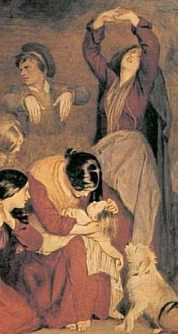 Like the ancient Celtic wife, the banshee too is a liminal being. Banshees usually appear at midnight, the liminal moment between two days, and represent a person’s passage into a sort of pre-death space in which they continue to live but are known to be near death. They also were heard from outside of homes, but never seem to enter them—the inverse of an ordinary woman, who would be strongly associated with hearth and home. Also like the ancient Celtic wife, the banshee has strained but important ties to the line of kinship: certain families were believed to be “followed” by a banshee. To be from a family followed by a banshee may have been a symbol of a certain rank and a point of pride.[iv] Despite the sorrow and darkness they represented, they remained important and valued.
Like the ancient Celtic wife, the banshee too is a liminal being. Banshees usually appear at midnight, the liminal moment between two days, and represent a person’s passage into a sort of pre-death space in which they continue to live but are known to be near death. They also were heard from outside of homes, but never seem to enter them—the inverse of an ordinary woman, who would be strongly associated with hearth and home. Also like the ancient Celtic wife, the banshee has strained but important ties to the line of kinship: certain families were believed to be “followed” by a banshee. To be from a family followed by a banshee may have been a symbol of a certain rank and a point of pride.[iv] Despite the sorrow and darkness they represented, they remained important and valued.
The lore of the banshee carries with it a lot of the contradiction of life as a pre-modern Celtic wife—life and death, familiarity and strangeness. She is both a man’s fear at the potential damage his wife could do to the family line, and a woman’s grief at the suffering she must endure. Though any modern scholar can only guess at the societal forces behind mythology and lore, the shared liminality between the banshee and the Celtic wife does present a strong rationale for the persistent ties between death and femininity in ancient Celtic societies.
In the ancient world, centuries of oppression lent a certain darkness to femininity—after all, why shouldn’t the husband fear the wrath of a woman taken from her birth family and constrained to the hearth, doomed to watch her brothers and sons die in wars entirely outside her control? There is power in a woman’s rage and a woman’s grief. Perhaps fear of that power is what gave rise to the prevalence of the badb and the banshee.
_________________________________________
[i] “Liminality – Oxford Reference”. Oxfordreference.Com, 2018, http://www.oxfordreference.com/view/10.1093/oi/authority.20110803100106133. Accessed 23 Aug 2018.
[ii] Lysaght, Patricia. “Irish Banshee Traditions: A Preliminary Survey”. Béaloideas, vol 4244, 1974, p. 94. JSTOR, doi:10.2307/20521375.
[iii] Kimpton, Bettina N. “”Blow The House Down”: Coding, The Banshee, And Woman’s Place”. Proceedings Of The Harvard Celtic Colloquium, vol 13, 1993, p. 39. JSTOR, https://www.jstor.org/stable/20557254.
[iv] Ibid., 44
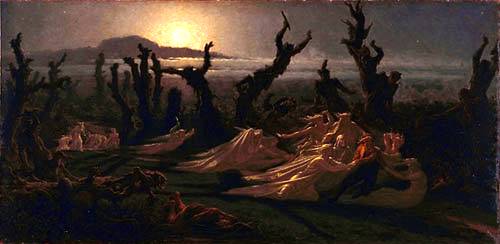
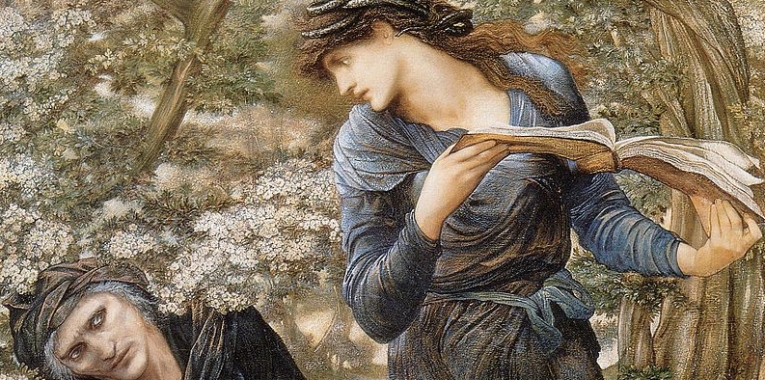
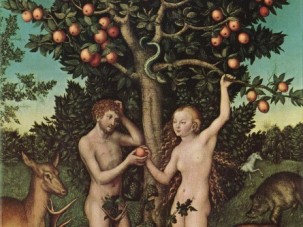


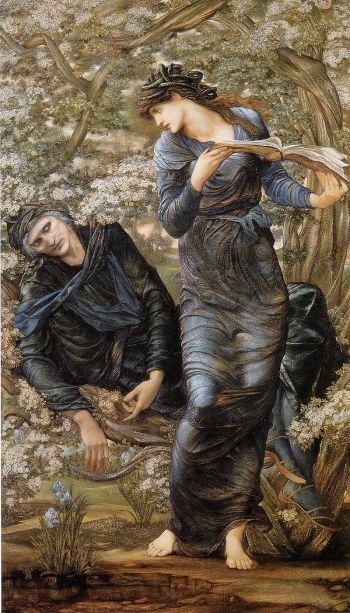


 pagan movement of modern day), the Bodhi Tree, its very name meaning the awakening or enlightenment of Buddha, and the Tree of Knowledge of the Judaic tradition. In each depiction, there are strong connections to humanity and the human experience. While the divine, or immortal may be connected to the tree, it is often in a human-like capacity that ascends into some type of enlightenment (in the case of monotheism, knowledge that leads to disaster). This can be explained by the idea that the tree is a mirror of humanity itself – ever rooted to the Earth by reaching for something greater, something higher, caught in a state in-between.
pagan movement of modern day), the Bodhi Tree, its very name meaning the awakening or enlightenment of Buddha, and the Tree of Knowledge of the Judaic tradition. In each depiction, there are strong connections to humanity and the human experience. While the divine, or immortal may be connected to the tree, it is often in a human-like capacity that ascends into some type of enlightenment (in the case of monotheism, knowledge that leads to disaster). This can be explained by the idea that the tree is a mirror of humanity itself – ever rooted to the Earth by reaching for something greater, something higher, caught in a state in-between.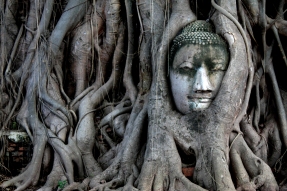 repetitive in Western culture. I’d like to examine these through the lens of the Greek myth of Daphne, the nymph lustfully pursued by Apollo until she is transformed into the laurel tree in order to escape. It is a timely myth to revisit for the modern audience, as many women via the Me Too movement have spoken out against male sexual misconduct, particularly from powerful men. It has spurred not only conversations on the sexual harassment, pressure and assault on women, but questions concerning sex and power dynamics.
repetitive in Western culture. I’d like to examine these through the lens of the Greek myth of Daphne, the nymph lustfully pursued by Apollo until she is transformed into the laurel tree in order to escape. It is a timely myth to revisit for the modern audience, as many women via the Me Too movement have spoken out against male sexual misconduct, particularly from powerful men. It has spurred not only conversations on the sexual harassment, pressure and assault on women, but questions concerning sex and power dynamics. greater, a life-threatening or ruining possibility.
greater, a life-threatening or ruining possibility.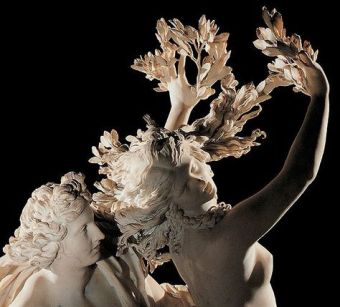 Daphne is described as athletic and when she flees, she gives a difficult pursuit for Apollo. But he is ultimately a god, so he is able to gain ground on her. Despite Daphne’s abilities, she cannot escape Apollo’s will. We could read this as despite female abilities and potential, women cannot escape society’s will.
Daphne is described as athletic and when she flees, she gives a difficult pursuit for Apollo. But he is ultimately a god, so he is able to gain ground on her. Despite Daphne’s abilities, she cannot escape Apollo’s will. We could read this as despite female abilities and potential, women cannot escape society’s will.
 the withdrawal of God’s protection. In Celtic culture, trees, or a grove can serve as a gateway to the realm of the faery, a mysterious world of amazement and entrapment, rife with equal parts wonder and danger. Such transformations and withdrawal from societal cooperation are by nature threatening to that society, but there is a freedom that can be found.
the withdrawal of God’s protection. In Celtic culture, trees, or a grove can serve as a gateway to the realm of the faery, a mysterious world of amazement and entrapment, rife with equal parts wonder and danger. Such transformations and withdrawal from societal cooperation are by nature threatening to that society, but there is a freedom that can be found. I met a lady in the meads,
I met a lady in the meads, warning to men of what could happen if women were allowed such self-direction. Indeed it hints at the very destruction of male power structures, “…pale kings and princes too, pale warriors, death-pale were they all.”
warning to men of what could happen if women were allowed such self-direction. Indeed it hints at the very destruction of male power structures, “…pale kings and princes too, pale warriors, death-pale were they all.”